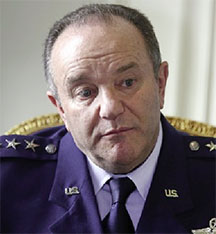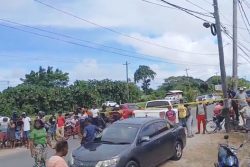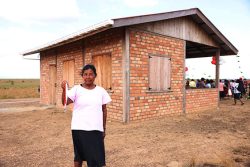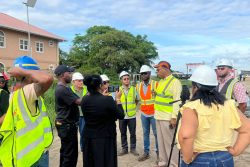WASHINGTON (Reuters) – NATO’s top military commander said yesterday that Russia appeared to be following some of the same “hybrid warfare” script in dealing with the former Soviet republic of Moldova that it used before annexing Crimea and intervening in eastern Ukraine.

Moscow intervened in Ukraine amid growing unrest by pro-Russian residents and rebels. US Air Force General Philip Breedlove, the head of NATO forces in Europe, noted that “little green men” – troops in uniform of unclear national origin – helped the rebels shape the military situation in Ukraine.
At the same time, Russia built up its military forces and supplies on the border under the guise of conducting an exercise. It eventually intervened, moving to annex Crimea in the south in the first case and to prevent the defeat of pro-Russian rebels by Ukrainian forces in the second. “To the little green men thing, we’ve clearly now seen the script play out in Crimea, we’ve seen the script play out in eastern Ukraine. We’re beginning to see some of the script in Moldova and Transnistria,” Breedlove said in a discussion at the Atlantic Council think tank.
Russian troops earlier this year staged military exercises in Moldova’s breakaway Transnistria region, which borders Ukraine on the southwest, and Moldova’s president warned Moscow against annexing the region like it did Crimea.
Russian Deputy Prime Minister Dmitry Rogozin last year warned Moldova that its drive for closer ties to Europe could cause it to lose control of Transnistria for good and lead to more costly energy ties with Russia, its main gas supplier.
Breedlove said now that NATO has a general understanding of how Russia employs its hybrid warfare tactics, it is important to figure out how to help countries in eastern Europe withstand the initial onslaught.
NATO cannot get involved in a member state’s internal conflicts. It can respond only if there is an identifiable outside aggressor.
“This hybrid war, if it kicks off and it is unattributable, this is not a NATO issue,” Breedlove said. “It is an internal-to-that-nation issue.”
Breedlove said NATO member states also needed to decide what their responsibilities should be in situations like Ukraine, where the country in conflict does not belong to the alliance.
“Right now, there is no NATO policy on what to do in those nations that find themselves outside of the alliance and not in the Russian Federation,” he said.
Once members have resolved those issues, they can begin to talk about how to assist and whether the help would come from individual countries, a coalition or an alliance like NATO.
Breedlove said Russia ultimately needed to be part of the solution.
“I don’t think we can ever arrive at a Europe whole, free and at peace without Russia as a partner,” he said, noting that the West had operated for a dozen years as if that was the case.
“Now we see a very different situation and we have to address that,” Breedlove said.






